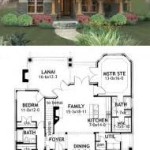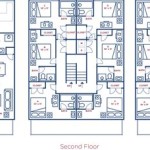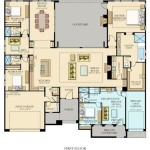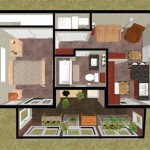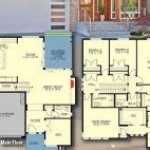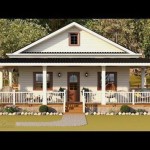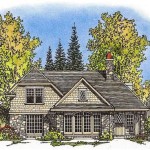House plans with indoor pools are architectural designs that incorporate a swimming pool within the confines of a residential structure. These plans offer a unique and luxurious living experience, providing homeowners with the convenience and privacy of having a pool at their disposal year-round. Indoor pools are particularly appealing in areas with inclement weather or limited outdoor space, as they allow for swimming and aquatic activities regardless of the external environment.
The integration of an indoor pool into a house plan presents a range of benefits. Indoor pools offer a controlled environment, free from the elements and potential hazards associated with outdoor swimming. They also provide a private and secluded space for relaxation, recreation, and fitness. Moreover, indoor pools can enhance the aesthetic appeal of a home, creating a luxurious and inviting atmosphere.
In the following sections, we will explore the advantages and considerations associated with house plans that incorporate indoor pools. We will discuss design elements, construction requirements, and the various types of indoor pools available. Additionally, we will provide insights into the maintenance and upkeep of these unique living spaces. By understanding the intricacies of indoor pool design and implementation, homeowners can make informed decisions about incorporating this luxurious amenity into their living space.
When considering house plans with indoor pools, several key points warrant attention:
- Design Integration: Seamlessly incorporate the pool into the home’s overall design.
- Ventilation: Ensure proper ventilation to control humidity and air quality.
- Safety: Prioritize safety measures, including fencing and non-slip surfaces.
- Structural Considerations: Account for the pool’s weight and impact on the building’s structure.
- Type of Pool: Select the appropriate pool type based on size, depth, and materials.
- Lighting: Design a lighting scheme that enhances the pool’s ambiance and functionality.
- Heating and Cooling: Maintain a comfortable temperature for swimming and relaxation.
- Maintenance: Establish a regular maintenance plan to ensure water quality and pool longevity.
- Cost: Factor in the significant construction and ongoing maintenance costs associated with indoor pools.
By carefully considering these points, homeowners can create a luxurious and functional indoor pool space that complements their lifestyle and enhances the overall enjoyment of their home.
Design Integration: Seamlessly incorporate the pool into the home’s overall design.
The successful integration of an indoor pool into a house plan hinges on meticulous attention to design. The pool should not only serve as a functional amenity but also complement the home’s aesthetic and architectural style. Here are key considerations for achieving seamless design integration:
- Architectural Style: Consider the architectural style of the home and select a pool design that harmonizes with it. For example, a contemporary home may suit a sleek, minimalist pool, while a traditional home may complement a more ornate or classic pool design.
- Flow and Circulation: Ensure smooth transitions between the pool area and other living spaces. Create clear pathways and avoid awkward or cramped layouts. The pool should be easily accessible from the main living areas and have designated spaces for relaxation, swimming, and entertainment.
- Natural Light and Ventilation: Maximize natural light by incorporating large windows or skylights near the pool area. This not only enhances the ambiance but also helps reduce humidity and improves air quality. Proper ventilation is crucial to prevent moisture buildup and ensure a comfortable environment.
- Materials and Finishes: Select materials and finishes that complement the overall design scheme and create a cohesive look. Consider using materials that are resistant to moisture and chlorine, such as tile, stone, or composite decking. Lighting plays a vital role in setting the mood and ambiance of the pool area. Choose lighting fixtures that enhance the aesthetic appeal and provide adequate illumination for safety and functionality.
By carefully considering these design elements, homeowners can create an indoor pool space that seamlessly blends with the home’s overall aesthetic and provides a harmonious and inviting environment for relaxation, recreation, and entertainment.
Ventilation: Ensure proper ventilation to control humidity and air quality.
Proper ventilation is paramount in indoor pool areas to control humidity and maintain optimal air quality. High humidity levels can lead to condensation, mold growth, and respiratory issues. Conversely, inadequate ventilation can result in stale air and unpleasant odors.
To ensure proper ventilation, several strategies can be employed:
- Exhaust Fans: Install powerful exhaust fans in the pool area to extract moisture-laden air. These fans should be vented directly to the outside to prevent the redistribution of humid air within the home.
- Air Conditioning: Air conditioning systems not only cool the air but also remove humidity. They can be particularly effective in controlling humidity levels in indoor pool areas.
- Dehumidifiers: Dehumidifiers are standalone appliances that extract moisture from the air. They can be used in conjunction with exhaust fans or air conditioning to further reduce humidity levels.
- Natural Ventilation: If possible, incorporate natural ventilation into the pool area design. Open windows and doors when weather permits to allow fresh air to circulate and reduce humidity.
In addition to these measures, it is essential to maintain proper ventilation during and after pool use. Running the exhaust fans or air conditioning while swimming and for a period afterward helps remove moisture and prevent condensation buildup.
By implementing these ventilation strategies, homeowners can ensure a comfortable and healthy indoor pool environment, free from excessive humidity and air quality concerns.
Safety: Prioritize safety measures, including fencing and non-slip surfaces.
Fencing
Fencing around indoor pools is crucial to prevent accidental falls and drowning, especially for young children and pets. The fencing should be at least 4 feet high and have self-closing and self-latching gates. The spacing between the vertical bars or slats should be narrow enough to prevent a child’s head from passing through. Pool fencing should comply with local building codes and safety regulations.
Non-Slip Surfaces
Non-slip surfaces are essential around indoor pools to minimize the risk of slips and falls. Choose materials with a high coefficient of friction, such as textured tile, non-slip paint, or rubber mats. These surfaces should extend from the pool deck to the surrounding areas, including steps and walkways. Regular cleaning and maintenance are necessary to keep non-slip surfaces in optimal condition.
Pool Covers
Pool covers provide an additional layer of safety when the pool is not in use. They act as a barrier to prevent accidental falls and can also help reduce evaporation and heat loss. Choose a pool cover that is durable, UV-resistant, and easy to operate. Automatic pool covers offer convenience and added safety, as they can be opened and closed with the touch of a button.
Emergency Equipment
Keep emergency equipment, such as life jackets, a first-aid kit, and a phone, easily accessible near the pool. Educate all household members and guests on pool safety and emergency procedures. Consider installing a pool alarm that sounds when someone enters the water without authorization.
Structural Considerations: Account for the pool’s weight and impact on the building’s structure.
Weight Distribution
Indoor pools exert significant weight on a building’s structure. The weight of the water alone can reach several tons, depending on the pool’s size and depth. This weight must be evenly distributed to prevent structural damage. Engineers carefully calculate the weight distribution and design the building’s foundation and framing to accommodate the additional load.
Foundation Reinforcement
To support the weight of the pool, the building’s foundation may need to be reinforced. This can involve adding additional footings, piers, or pilings to transfer the load to the underlying soil or bedrock. The foundation must be strong enough to prevent settling or cracking, which could compromise the pool’s integrity and the overall structural stability of the building.
Framing Modifications
The building’s framing may also need to be modified to accommodate the pool. Load-bearing walls or columns may need to be added or reinforced to support the weight of the pool and the surrounding area. Steel beams or trusses may be used to span large openings and distribute the load more evenly.
Seismic Considerations
In areas prone to earthquakes, special considerations must be made to ensure the pool’s structural integrity during seismic events. The pool should be designed to withstand lateral forces and prevent collapse or damage to the building. This may involve using flexible joints or seismic isolators to absorb and dissipate seismic energy.
By carefully considering these structural considerations, architects and engineers can design indoor pool structures that are safe, stable, and durable. Proper planning and execution ensure that the pool is seamlessly integrated into the building without compromising the structural integrity or the safety of the occupants.
Type of Pool: Select the appropriate pool type based on size, depth, and materials.
The selection of the indoor pool type depends on several factors, including the available space, desired depth, and preferred materials. Each type offers unique advantages and considerations.
- Lap Pools: Designed for swimming laps and fitness, lap pools are typically long and narrow, allowing for extended swimming distances. They are ideal for those who prioritize exercise and training.
- Leisure Pools: Designed for relaxation and recreation, leisure pools offer a more spacious and versatile design. They often incorporate features such as benches, jets, and lighting to enhance the swimming experience.
- Plunge Pools: Compact and deep, plunge pools are ideal for quick dips and hydrotherapy. They are often used for cooling off, relaxation, or as part of a spa or wellness area.
- Infinity Pools: Designed to create a seamless visual connection between the pool and the surrounding landscape, infinity pools feature one or more edges that blend into the horizon. They offer a luxurious and visually stunning swimming experience.
In addition to the pool type, homeowners should also consider the depth and materials used in the pool’s construction. Pool depth can range from shallow areas suitable for children to deep ends for diving or underwater activities. The choice of materials, such as concrete, fiberglass, or vinyl, depends on factors like durability, cost, and aesthetic preferences.
Lighting: Design a lighting scheme that enhances the pool’s ambiance and functionality.
Purposeful Illumination
Lighting plays a vital role in creating the desired ambiance and functionality of an indoor pool area. A well-designed lighting scheme can enhance the visual appeal of the pool, highlight architectural features, and improve safety. It is important to consider both the practical and aesthetic aspects of lighting to create a space that is both inviting and functional.
Types of Lighting
Various types of lighting can be incorporated into an indoor pool area to achieve the desired effects. Underwater lighting illuminates the pool itself, creating a shimmering and inviting atmosphere. Accent lighting highlights specific architectural features, such as columns or water features, to draw attention and add visual interest. Pathway lighting provides safe and convenient illumination for navigating the pool area, especially during evening hours.
Natural Light Integration
In addition to artificial lighting, natural light should be maximized to create a bright and airy pool space. Large windows or skylights allow natural light to penetrate the area, reducing the need for artificial lighting during daytime hours. Proper placement of windows and skylights can also help regulate the temperature of the pool area.
Energy Efficiency
Energy efficiency should be a consideration when choosing lighting for an indoor pool area. LED lights are an energy-efficient option that provides bright and long-lasting illumination. They also generate less heat than traditional incandescent bulbs, which can help reduce cooling costs in the pool area.
By carefully considering these factors and incorporating a variety of lighting types, homeowners can create an indoor pool area that is both visually stunning and functionally illuminated.
Heating and Cooling: Maintain a comfortable temperature for swimming and relaxation.
Heat Sources
Maintaining a comfortable temperature in an indoor pool area is essential for year-round enjoyment. Several heating options are available to achieve the desired warmth, including gas heaters, electric heat pumps, and solar heating systems. Gas heaters provide direct heat to the pool water, while heat pumps transfer heat from the surrounding air or ground to the water. Solar heating systems utilize solar energy to heat the pool water, offering a sustainable and cost-effective solution in areas with ample sunlight.
Temperature Control
Thermostats and controllers allow for precise temperature regulation of the pool water. These devices monitor the water temperature and automatically activate the heating system when necessary to maintain the desired temperature. Advanced controllers can be programmed to adjust the temperature based on the time of day, day of the week, or even the weather forecast, ensuring optimal comfort and energy efficiency.
Dehumidification and Ventilation
Proper ventilation and dehumidification are crucial in indoor pool areas to prevent condensation, mold growth, and respiratory issues. Dehumidifiers remove moisture from the air, while ventilation systems circulate fresh air and exhaust humid air. Maintaining a balanced humidity level helps create a comfortable environment and prevents damage to the pool structure and surrounding finishes.
Energy Efficiency
Energy efficiency should be a key consideration when choosing heating and cooling systems for indoor pools. Energy-efficient heat pumps and dehumidifiers can significantly reduce operating costs. Additionally, utilizing solar heating systems or incorporating natural ventilation strategies can further enhance energy efficiency and sustainability.
By carefully considering these factors and implementing appropriate heating, cooling, and ventilation systems, homeowners can create a comfortable and inviting indoor pool environment that can be enjoyed throughout the year.
Maintenance: Establish a regular maintenance plan to ensure water quality and pool longevity.
Regular maintenance is essential for maintaining the quality and longevity of an indoor pool. A comprehensive maintenance plan should address various aspects to ensure the pool remains clean, safe, and inviting for use.
- Water Chemistry Management:
Maintaining proper water chemistry is crucial for preventing algae growth, corrosion, and swimmer discomfort. Regular testing of pH levels, chlorine or bromine levels, and alkalinity is necessary. Chemical adjustments and balancing should be performed as needed to keep the water within optimal ranges.
- Filtration and Circulation:
The pool’s filtration system plays a vital role in removing debris and contaminants from the water. Regular cleaning of the filter media, such as or sand, is essential to ensure efficient filtration. Additionally, proper circulation of the water helps distribute chemicals evenly and prevents stagnant areas.
- Cleaning and Vacuuming:
Regular cleaning of the pool surfaces, including the walls, floor, and steps, is necessary to remove dirt, debris, and algae. Vacuuming the pool helps remove settled particles and debris from the bottom of the pool.
- Equipment Inspection and Maintenance:
All pool equipment, such as pumps, heaters, and dehumidifiers, should be inspected and serviced regularly. This includes checking for leaks, proper operation, and any necessary repairs or replacements. Regular maintenance helps extend the lifespan and efficiency of the equipment.
By following a regular maintenance schedule and addressing these key areas, homeowners can ensure that their indoor pool remains clean, safe, and enjoyable for years to come.
Cost: Factor in the significant construction and ongoing maintenance costs associated with indoor pools.
Construction Costs
The construction costs of an indoor pool can vary widely depending on several factors, including the size and depth of the pool, the materials used, and the complexity of the design. Indoor pools typically require significant excavation, structural support, and specialized equipment, which can drive up the construction costs compared to outdoor pools.
Materials and Finishes
The choice of materials and finishes for the pool structure, decking, and surrounding area can also impact the overall cost. High-end materials, such as marble or imported tile, will typically cost more than standard materials like concrete or vinyl. Additionally, custom features like infinity edges, waterfalls, or built-in spas can further increase the construction expenses.
Mechanical Systems
Indoor pools require specialized mechanical systems to maintain water quality, temperature, and humidity control. The cost of these systems, including pumps, filters, heaters, dehumidifiers, and ventilation equipment, should be factored into the overall construction budget. Energy-efficient systems and sustainable design choices can help reduce long-term operating costs.
Ongoing Maintenance Costs
Maintaining an indoor pool requires ongoing expenses to ensure the pool remains clean, safe, and in good condition. Regular maintenance includes water testing and chemical treatment, filter cleaning, equipment servicing, and cleaning of the pool surfaces. The frequency and cost of maintenance will vary depending on the size and usage of the pool, but it is essential to budget for these ongoing expenses to preserve the longevity and enjoyment of the pool.
By carefully considering these cost factors and planning accordingly, homeowners can make informed decisions about incorporating an indoor pool into their home design while ensuring financial sustainability and long-term enjoyment.









:max_bytes(150000):strip_icc()/DesRosiers-ea5a5d45dba743f39d58337910b865e2.jpg)
Related Posts

